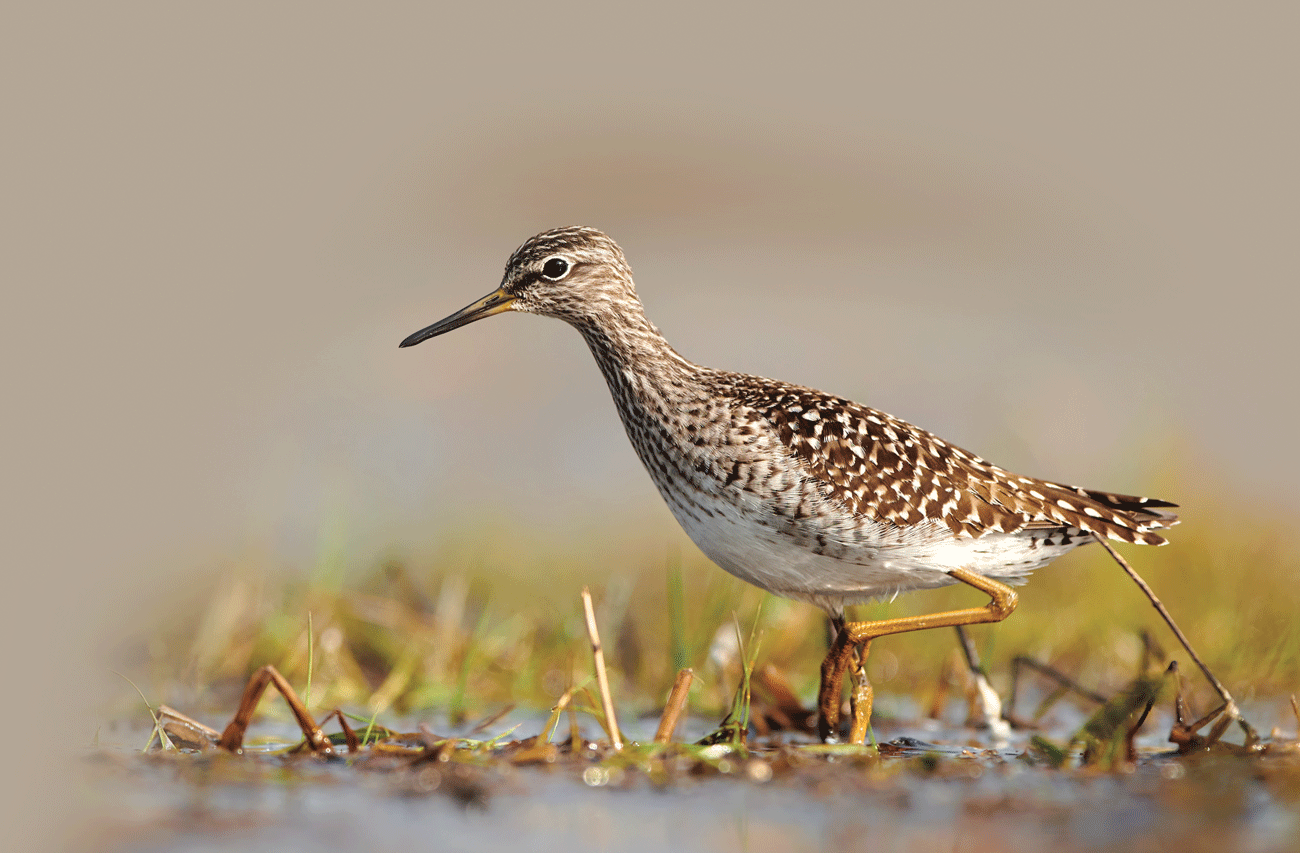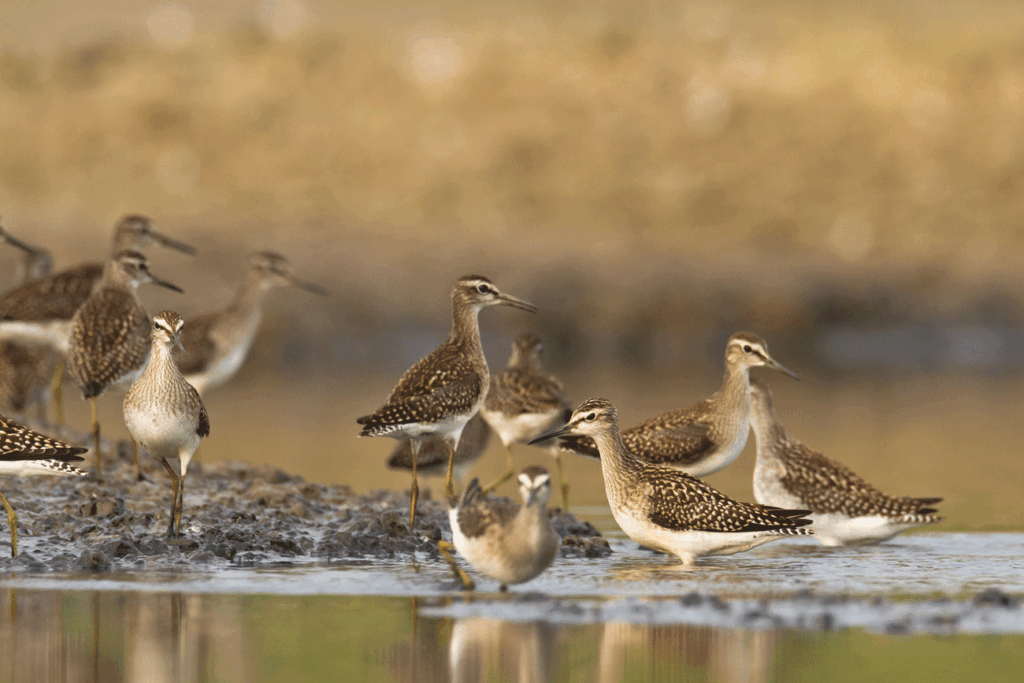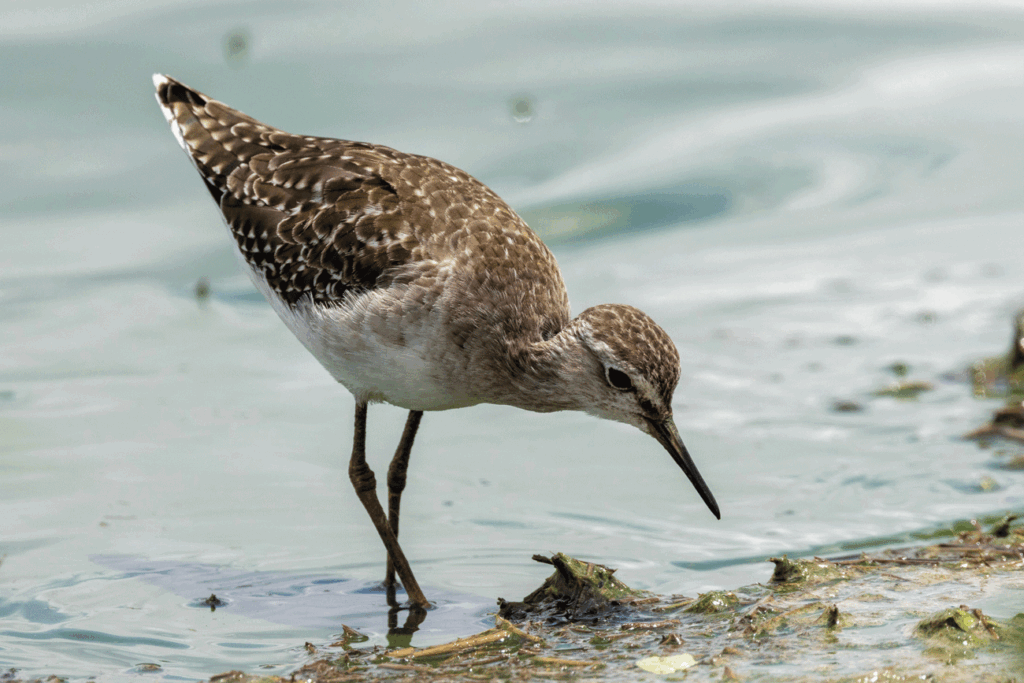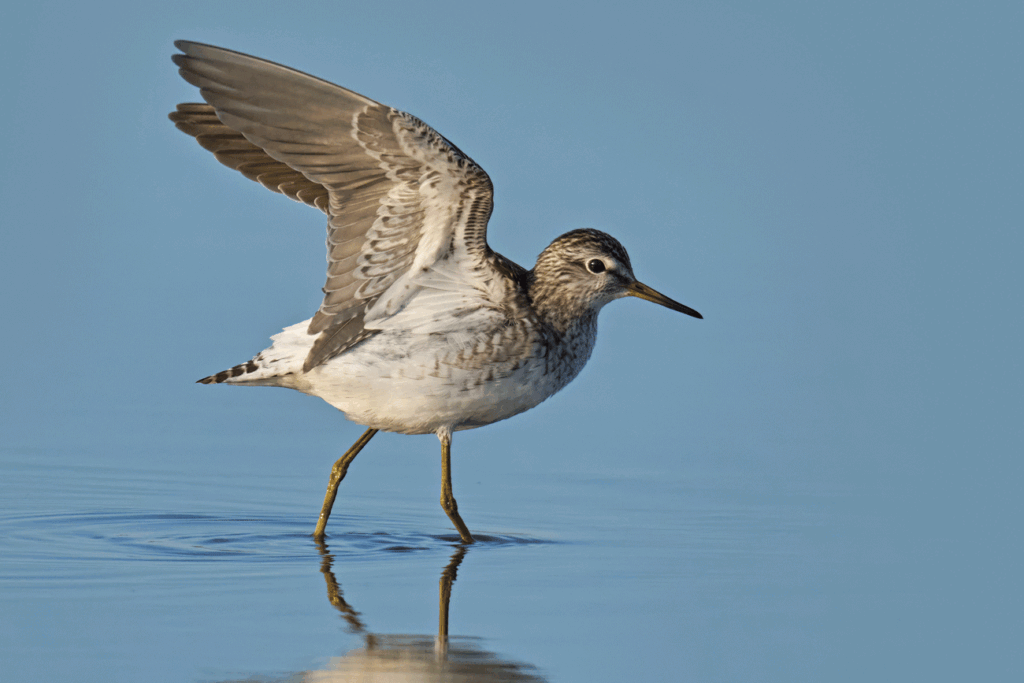
Among a crowd of elephants and hippos at a watering hole somewhere in Africa right now is an elegant little wader picking its way carefully through a forest of hefty feet and hooves.
The mammals will have their own travels to contend with if their marshy oasis dries up but the journey of this thrush-sized bird accompanying them is even more impressive.
It is using its long bill to probe for worms, crustaceans and aquatic invertebrates in the muddy shallows. Soon it will have put on enough fat to power it for a non-stop flight north of up to 2,790 miles.
This Wood Sandpiper – affectionately known as a ‘Woodsand’, is on a mission that will take it from as far away as South Africa to breed in the boreal forests, coniferous woods and tundra that stretch east from Scandinavia to Kamchatka.

Some birds use England as a stepping stone in the late Spring before they move on and they invariably attract the birder brigade to make a special effort to see them because they are scarce, in fine summer plumage, and with us all too briefly.
Few are seen in Surrey each year, either on their outward or returning journeys, and the handful that do often only stay for a day.
So I’d never held out much hope of finding one in Cranleigh – especially as we don’t have any ideal habitat and the only one ever recorded here was way back in 1859 when it was ‘taken’ and stuffed for a taxidermist’s personal collection.
In late April last year though there were a number of sightings in West Sussex and a friend tipped me off about a gathering the previous day of as many as five Wood Sandpipers at RSPB Pulborough. But now they had gone.
It got me thinking. If I was a Wood Sandpiper heading north from there, where might I pass over? Cranleigh. And I knew just the place that might entice one of them, or another individual, down to land. It was a large temporary puddle in a field that had already come up trumps with a variety of other waders in the preceding weeks.

Fat chance, I thought, but if you don’t take your chances then what is missed will always remain a mystery. So I set off after Sunday lunch out of a sense of duty more than anything else and really not expecting to connect with anything unusual.
As I approached the pool I scanned with my binoculars to check what was around. There were just half a dozen Lapwings, four Black-headed Gulls and a Lesser Black-backed Gull.
Then among a few birds in the water I suddenly saw another wader which I initially dismissed as a Green Sandpiper, a scarce Cranleigh bird in itself that had been in the vicinity the previous week..
But closer inspection through my telescope revealed it was even more interesting. The trouble was it kept disappearing behind clumps of grass.
Over the next two hours I was able to go through the salient features and build up the following picture. It had long yellow legs, a dainty gait, and a white supercilium stretching back beyond its eye to the back of its head, giving it a capped appearance.

The long bill was ever so slightly upturned, there were dark markings on the flanks, a white belly, and fine grey vertical streaking on the neck, nearly forming a breast band but broken by white in the centre.
Its back showed spangled white and brown markings with a glint of ginger in the sun. When it briefly flew it revealed a white rump and toes projecting from blackish banding on the tail.
Yes folks! It truly was a ‘Woodsand’, and what a beautiful one. Apparently the first here for 164 years and the 162nd bird species I have encountered in the village.
What a bit of luck! I was elated, of course, and did a Jurgen Klopp style fist pump as I uttered a big ‘Yes!!’ (but not too loudly).
I have found it often true that with birding, as in other aspects of life, we can make our own luck by being optimistic, following up on a hunch and always being willing to give the seemingly impossible a go.
Next day the puddle had noticeably diminished in size but the Wood Sandpiper did stay for an encore before bowing out and moving on.
X (formerly Twitter) – @Crane_Spotter











